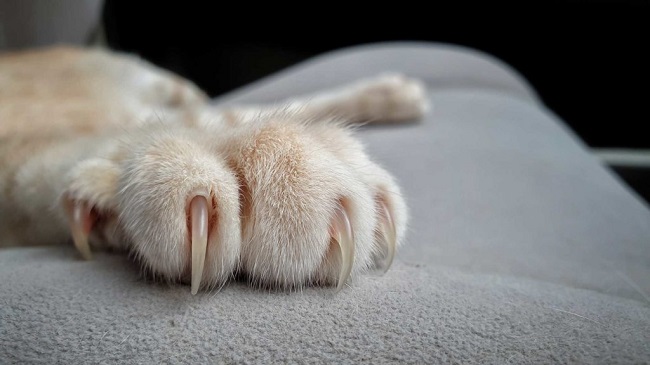Many cat owners find themselves puzzled and sometimes alarmed to discover what appears to be a cat’s nail or claw lying around the house. Is it normal for cats to shed nails, or could this signal a health problem?
In this guide, we delve deep into the fascinating world of feline biology to provide answers and shed light on this often-misunderstood aspect of cat behavior.

Cats Shedding Their Nails
Before we delve into the reasons, it’s crucial to clarify that cats shedding nails is a natural process and generally not a cause for concern. However, understanding the hows and whys of this process can help put anxious cat parents at ease.
Read Also:
The Structure of a Cat’s Nail
The structure of a cat’s nail, or claw, is somewhat akin to an onion, comprising several layers. The outer layer, called the sheath, is what is commonly found by pet owners and mistaken for the entire nail. Inside this sheath is the newer, sharper claw ready to be revealed once the sheath is shed.
Why Do Cats Shed Their Nails?
Cats shed their nails for the same reasons snakes shed their skin or humans exfoliate – to remove old, worn-out layers and reveal a new, sharp claw beneath. This process, known as ‘scratching,’ is a normal part of feline behavior.
Scratching has multiple purposes – it helps cats stretch their bodies, mark their territory, and, importantly, facilitates the shedding of the old claw sheaths.
If you notice small, hollow, nail-like structures near your cat’s scratching post, these are the shed sheaths from your cat’s claws.
How to Care for Your Cat’s Claws
While nail shedding is a natural process, proper claw care is vital for a cat’s health and comfort. Regular nail trims can help prevent overgrown claws, which can become painful and even lead to infection if they grow into the paw pad.
Additionally, providing suitable scratching surfaces can encourage healthy scratching behavior and natural nail shedding.
When Should You Be Concerned?
While nail shedding is generally normal, certain signs could indicate a problem. If your cat seems to be in pain, is limping, has swollen paws, or you notice blood around the nails, it’s time to consult a veterinarian.
These symptoms could indicate an infection, injury, or a medical condition like a nail bed tumor or fungal infection.
Encouraging Healthy Scratching Behavior
Understanding the importance of a cat’s scratching behavior, both for nail health and general well-being, is crucial. Here are some ways to encourage this natural behavior:
Provide Multiple Scratching Surfaces
Cats have individual preferences when it comes to scratching surfaces. Some may prefer horizontal surfaces, while others lean towards vertical options. Offering a variety of scratching posts, boards, and even cat trees can help meet these needs.
Use Catnip
Many cats are attracted to catnip. Sprinkling it on the scratching posts can encourage your cat to use them and make scratching a fun activity.
Warning Signs of Claw Problems
While nail shedding is a normal part of feline life, certain signs might indicate an issue with your cat’s claws. Observing your cat’s behavior and routinely inspecting their claws can help catch these problems early.
Overgrown Claws
Cats that don’t scratch enough or at all, especially older or less active cats, can sometimes have issues with overgrown claws. Overgrown claws are uncomfortable and can curl into the cat’s paw pad, causing pain and possibly leading to an infection.
Nail Bed Infections
If you notice redness, swelling, pus, or your cat seems to be excessively licking or biting at their nails, this could be a sign of a nail bed infection. Such infections require immediate veterinary attention.
Changes in Scratching Behavior
A sudden change in your cat’s scratching habits could also indicate a problem. If your cat stops scratching altogether, it could be due to pain or an issue with their nails or paws.
By understanding these signs and knowing how to promote healthy scratching behavior, cat owners can help ensure their pets remain healthy and happy.
Read Also:
Conclusion
Understanding the nuances of feline biology, such as nail shedding, can enhance our caregiving skills and deepen our appreciation for these fascinating creatures. Cat nail shedding is a natural process that plays a critical role in a cat’s health and behavior.
Regular claw care, including providing scratching posts and routine nail trims, can contribute to your feline friend’s well-being.
























